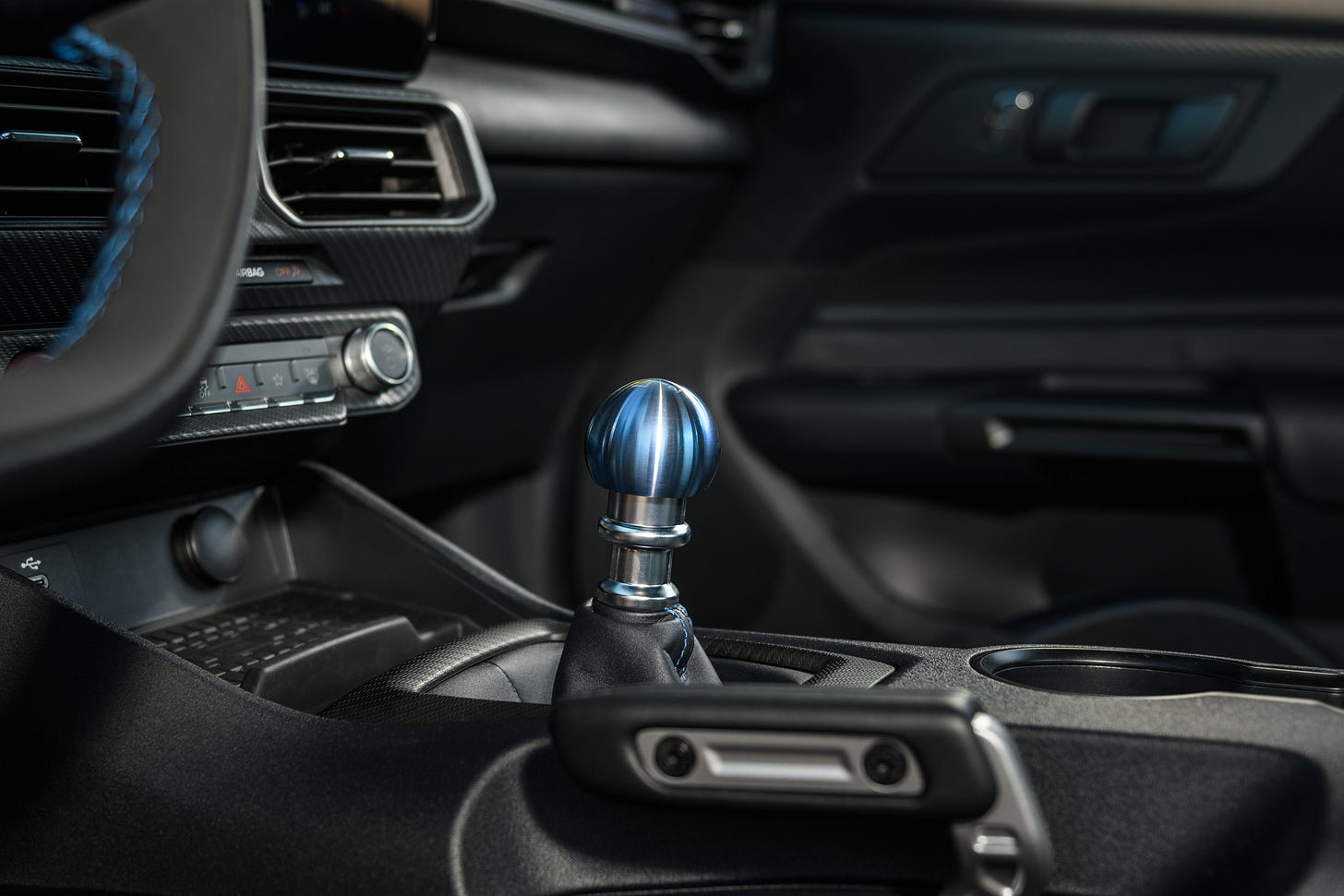2024 Ford Mustang Dark Horse Review
Blurring the line between muscle and sports car, the Dark Horse gallops beyond expectations
CHARLOTTE, N.C. — I reached 106 mph on the steep banking of turn two at Charlotte Motor Speedway before my bravery gave out.
I’ve driven on numerous race tracks and taken more than a few driving schools, but knowing your limits is the trick to being a successful gentleman driver. It was at 106 that the bumpy pavement around this famous NASCAR oval made itself much more readily apparent.
I have no doubt that the Dark Horse is more than capable of pressing into the pavement and using all of its considerable aero and performance hardware to achieve far higher speeds in the hands of a jockey more capable — or more foolish — than I.
According to the onboard telemetry that Ford engineers had installed in my Dark Horse, I touched 127 mph on the back straight before achieving an astonishing 1.58G under braking into a tight hairpin, dropping my speed down to the mid-30s. Affectionately nicknamed the "Roval," the half-road course half-oval at Charlotte is deceptively simple in the way that many of the best tracks are.
A handful of tight turns combined with some sweeping lefts and rights gave journalists an ideal layout to discover just how good this new Mustang Dark Horse really was. In my review of the standard Mustang last week, I said that the 315 horsepower EcoBoost engine was the one to get and that folks looking for more should skip the GT and jump straight to the Dark Horse — a heavily upgraded, pavement-gobbling sports car that is one of the best deals around.
With a 5-liter V8 putting out 500 HP, the Dark Horse sees upgrades to nearly every performance part over the standard GT. The 6-speed manual is an intoxicatingly smooth TREMEC unit with a titanium shift knob and a 3.73 TORSEN Limited-slip rear diff, improved engine oil, transmission, and differential coolers, bigger wheels, better tires, additional bracing, a big wing, all manner of extra aero, and a special, numbered Dark Horse plaque on the dashboard.
But reading specs only tells half the story. The Dark Horse dances the line between sports car and muscle car. The joke about Mustang owners being unable to turn successfully — brought on by legions of Mustang-driving morons crashing as they try to show off leaving Cars and Coffee events — won't apply here. The Dark Horse simply makes too much grip, and the electronic assists are too good.
I had a long chat with several Ford Performance engineers at a rooftop happy hour, where they explained the delicate intermix of sensors and assists that work in harmony to keep the Mustang going in the right direction. Switching into Sport or Track mode, for example, frees up the traction control to let the rear wheels spin more freely, and allows far more yaw before the stability control provides a gentle guard rail preventing a glorious power slide from abruptly turning into an out-of-control spin into a literal guard rail.
The amount of electronics and support in the Dark Horse is astonishing and will allow even novice drivers to get the most out of their new sports car on an autocross course. As skills are gained, changing drive modes — or even turning traction control off entirely — can free up a more experienced wheelman to get the most out of the car.
The Dark Horse is balanced and predictable, and the rev-match-equipped manual should be mentioned again here. It's one of the finest gearboxes I've used and is worth calling out as a must-have option, especially since the Dark Horse is let down a touch by its automatic option, a single-clutch ten-speed gearbox, an off-the-shelf unit that is begging to be replaced by a dual-clutch 7- or 8-speed that would deliver faster lap times. As it is, the manual and automatic Dark Horse are roughly equivalent, though the engineers note that the transmissions gain and lose time in different places on the racetrack. Most modern sports cars are seeing faster lap times with dual-clutch automatics over manuals.
Much of the rest of the Dark Horse experience is identical to that of the regular Mustang, including the two large digital screens with Epic's Unreal Engine powering some of the graphics, improved visibility, and a less bunkered feel versus the old Mustang, and terrific new tri-bar headlights that include a unique walk-up welcome sequence that should surprise and delight Dark Horse owners.
Starting close to $60,000, the Dark Horse is very competitive with the rest of the sports car segment (it was hinted that the Porsche Cayman was the benchmark), but buyers would do well to check option boxes for the Appearance and Track Packs, as well as the optional Recaro seats, bringing the total price close to $70,000. If you're looking at this car, it's worth the extra spend.
Though each Mustang Dark Horse is individually numbered, Ford says production will only be limited by demand. With the Dodge Challenger and Chevy Camaro already canceled, to be replaced, perhaps, by all-electric offspring, the Mustang stands alone as the final gas-powered muscle car at the auto show.
I hope this isn't the last gas-powered sports car Ford builds. But if it is, what a wonderful way to go out. Now, please excuse me while I take another lap around the Roval before the EVs take over.
Read this next:
2021 Ford Mustang Mach-E GT Review
·SAUSALITO, Calif. — The GT label has adorned the faster, performance-oriented version of the Ford Mustang sports car since 1965. Back then, the Mustang GT included a V8 engine, disc brakes, and an upgraded instrument panel, among other things. Steve McQueen drove a 1968 GT in Bullitt, a c…







